Growing your own SHTF pharmacy, or perhaps more accurately, apothecary, should be near the top of your medical preps. You will not be able to call 911 or rush out to the emergency room during a doomsday disaster, you will be your own first-responder.
Having a natural apothecary growing on your prepper retreat or bug in location will help you to stay healthy and treat a host of likely ailments that could affect you and your loved ones.
There is absolutely no reason to wait until the SHTF to start using natural remedies to treat routine medical issues and injuries.
Ridding your body of potentially harmful chemicals that are commonly included in over-the-counter medications, salves, and ointments, should help you build a stronger body and help you to become more physically prepared for the demands that will be placed on it during a long-term survival scenario.
Replacing prescribed antibiotics for a chronic medical condition might not be necessary today, but learning how to grow and make natural alternatives would be a wise preparedness choice, indeed.
There are two superb and distinct advantages to growing your own pharmacy. One – you know exactly what is going into your medicine and will be able to pronounce the name of all ingredients. Two – you can prevent illness and help your body heal for mere pennies on the dollar.
Although some medicinal herbs, spices, bark, and roots typically are used in home remedies, because they are natural materials, that doesn’t mean they are all safe for children to consume, or will not cause allergic reaction in some people.
Research any item which will be grown in your SHTF pharmacy.Consult your doctor and tell the health practitioner exactly which plants you intend to take.
If you are given the OK, try the natural remedies in very small doses at first to ensure you will not have a negative reaction to the ingredients.
Disclaimer
The information in this article is provided “as is” and should not be mistaken for or be a substitute for medical advice. Always consult your physician before trying any of the advice presented on this page.
Always seek the help of a professional when delivering a baby. Neither the author nor www.SurvivalSullivan.com or the company behind the website shall be held liable for any negative effects of you putting into practice the information in this article.
How to Grow Your Own Pharmacy
Most herbs, spices, and roots do not require a lot of space to grow. The space and type of sunlight needed to grow the apothecary will depend upon what you will be growing.
Make sure to research companion plants for each item placed in both your indoor and outdoor natural pharmacy to ensure not only a bountiful harvest, but also so you will known what shouldn’t be sharing the same plot.
Growing your pharmacy around and intermingled with your traditional garden may garner benefits for both.
Some herbs make great companion plants for specific crops – and help keep some bad bugs away from the growing area.
To conserve space and churn out a maximum yield, consider growing colorful and fragrant herbs, spices, and medicinal plants in decorative planters and traditional landscaping areas around your home. This will keep the natural medicine ingredients close at hand while these valuable preps are hiding in plain sight!
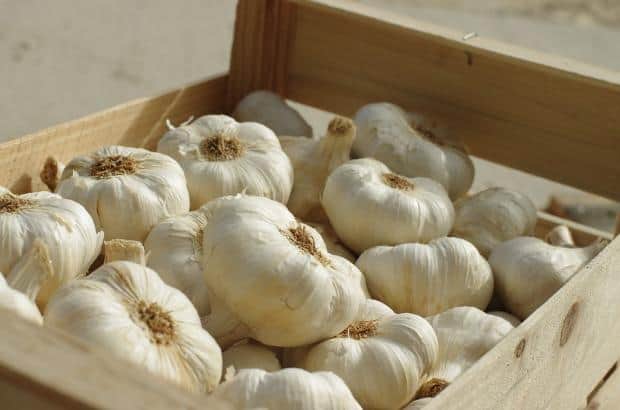
1. Garlic
Plant ample garlic in your survival apothecary, even if you live in an urban dwelling even if you live in an urban dwelling and have very little room to cultivate crops. Garlic is one of the most potent anti-bacterial, anti-fungal, and antimicrobial agents offered by Mother Nature.
There are many ways to use it to combat cold and flu symptoms using garlic, but one of the simplest involves finely chopping one clove of garlic and putting the tiny pieces into a shot glass.
Fill the shot glass all the way to the top with olive oil (or your favorite carrier oil, like coconut or almond oil) and let the garlic infuse into the mixture in as warm a place as possible for at least 5 hours.
Rub the mixture thoroughly onto both feet, cover them with socks, and go to bed. In the morning, the garlic and oil mixture should have pulled a ton of germs from your body. Repeat this process for several nights, if necessary.
Planting Garlic
Obtain seed from a registered nursery or seedsman – trying to plant garlic cloves you bought from the grocery store usually doesn’t work as the garlic may have been treated with chemicals to stop it sprouting.
Once you have organic seed then you can keep some for planting the next year. You may be able to obtain garlic for planting from fellow gardeners or organic markets near you. Garlic takes a while to adjust to the growing conditions in your area, so the more local the seed garlic used the better.
How to Plant
Plant with the pointy end of the clove upwards, between 1 to 2 inches deep, and 4 to 6 inches apart, so the bulbs can develop with sufficient space to expand.
They can be planted in pots if you don’t have a garden, or directly in the ground.
When
Plant in the spring when the weather is cooler – around 32 to 50 degrees F (0-10 degrees C, as cooler weather is necessary when it puts out roots and the bulbs start to form – after that it can tolerate hotter weather.
The alternative is to plant in autumn before winter frosts set in, so it can grow roots, then it goes dormant, but will already be established and ready to grow in the spring and summer.
Harvest can take pace after seven to eight months.
Where:
Plant in full sun or where it is mostly sunny – 6 to 8 hours a day is necessary.
Soil:
Garlic likes a well-drained loose soil that has been enriched with compost. Because it has shallow roots you don’t want the soil to get too hot otherwise it stops growing properly – so put on plenty of mulch to help cool the soil.
Watering
Don’t water after planting the garlic seed, then water at intervals of 3 to 5 days depending on how hot it is as the bulbs develop. Hold on watering towards the end of the season when the lower leaves start turning brown.
You need to test that the cloves in the bulb are full. If the bulbs are not rounded and full it’s too early to harvest, and if the skins have burst then it’s a bit late. Keep testing until they are perfect for harvest.
Pests and Diseases
Garlic is easy to grow but is subject to some pests and diseases. Cornell University has a comprehensive factsheet provided by their Plant Disease Diagnostic Clinic, which covers the main problems such as Botrytis Rot, Basal Rot, Downy Mildew, Penicillium Decay and White Rot.
Several nematode genera can cause problems. The fact sheet advises on management and provides good illustrations to help identify problems.
Note
Don’t plant garlic with peas and beans as it can inhibit their growth. It deters grubs and mites – so some garlic underplanted around roses will keep roses relatively clear of bugs, and hide your food/home remedy in plain sight.
Garlic and onions are the same family – so if you previously planted onions in a spot don’t plant garlic there – allow a different crop to grow so the same nutrients are not depleted from the soil, and any pathogens in the soil relative only to alliums are not transferred to the new crop.
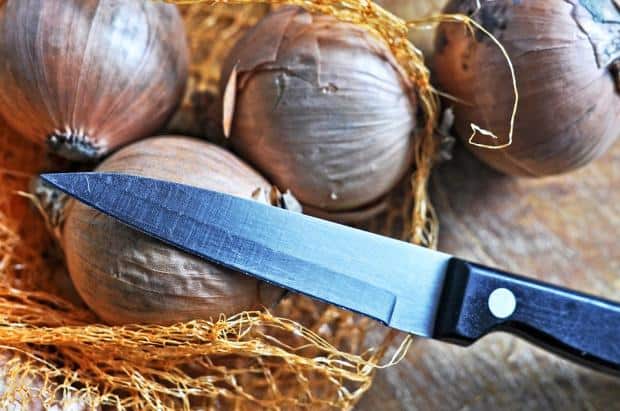
2. Onions
Add a few extra rows of onions to your traditional garden so they too can be used as a part of your SHTF pharmacy. Like garlic, onions pull germs and toxins from the body and also help enhance our immune systems.
You can slice one onions thinly and sleep with a few slices on your feet beneath socks or make a natural cough syrup to drink when your feel a sore throat, cold, or flu coming on.
To make the cough syrup, thinly slice one large onion, put the slices in a skillet along with 2 cups of honey, and place on low heat – not above 95 degrees F, for approximately 30 minutes. Heating honey to high temperatures can destroy many of the vital health benefits.
Feel free to throw a few garlic cloves and a little bit of ginger root or cinnamon into the skillet as well – the ginger and cinnamon will not only improve the taste of the cough syrup, but help kill germs and soothe congestion relate pain as well.
The natural cough syrup home cold remedy will keep in a sealed container in the refrigerator for about two weeks. Take 1 teaspoon of the mixture up to 4 times per day to combat cold and flu symptoms.
How to Plant
Obtain seed from a registered nursery or seedsman. Once you have organic seed then you can keep some for planting the next year.
Scatter seeds in a narrow furrow, cover lightly with soil, and use a fine spray of water to wet the ground. Alternatively start onion seed in seed trays then when they are about 3 to 4 inches high, separate and plant in a furrow.
You don’t need to plant them upright – lay them flat on the soil and cover the roots. Within a couple of days, you will find the onion sprouts have positioned themselves vertically. Plant 4 to 6 inches apart, in rows spaced 8 to 10 inches apart.
Plant in well-drained pots if you can’t put them in the ground. It is probably advisable to grow spring onions and shallots in pots as they take up less room than the bulbing onions.
When
Plant in the spring when the weather is cooler as onions prefer cooler weather at the start of their life cycle. In areas where winters are mild onions can be grown as a fall or winter crop. They need warm weather for the bulbs to form.
Harvest can take place after six months.
Where
Plant in full sun, or where it is mostly sunny – they need plenty of light to properly form bulbs – i.e. long days, so make sure you get them planted in time for the long summer days.
Soil
Onions like a well-drained loose soil that has been enriched with compost. The pH should be around 6.5 – 6.8. Because onions have shallow roots you don’t want the soil to get too hot otherwise they stop growing properly – so put on mulch to help cool the soil.
Watering
Water once a week properly with a good soak where the soil is wet to about an inch down instead of lightly sprinkling every day. Too much water will cause diseases and rotting, so if you are having decent rains then hold on any extra watering. Keeping the soil moist enough is important for good bulb formation. Hold on watering towards the end of the season when the leaves start turning brown and get floppy.
Note
Onion types such as Spring Onions and Shallots can be grown in pots and used for salads from between 2 to 3 months after planting.
Pest and diseases
Many of the diseases are similar to those of garlic. This study is aimed more at large scale production but does give valuable advice on preventing, identifying and treating the various problems.
It is unlikely that you will be dealing with the majority of these if growing a few onions for home use and not large fields. What is important is to buy disease resistant seed.
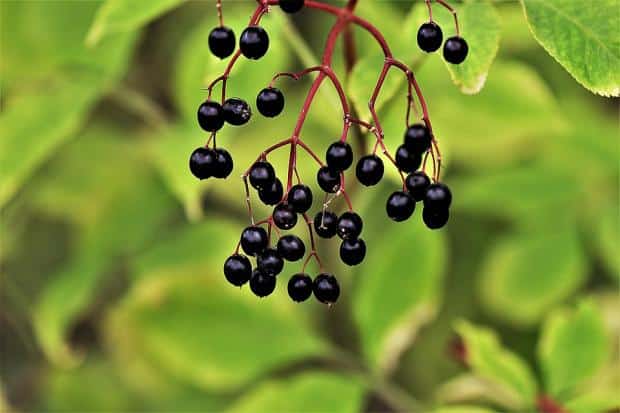
3. Elderberry
This herb has been used for centuries to fight the common cold and flu symptoms. Elderberry will help fight germs while booting your immune system and soothing sore throats.
To make a simple elderberry cough syrup. Mix together ½ cup of dried elderberries with three cups of water and bring the mixture to a boil. Turn the heat down and simmer it for 30 minutes.
Strain the mixture into a Mason jar and add 1 teaspoon each of cinnamon, cloves, and ginger, and 1 cup of honey.
Allow the syrup to cool enough to drink before sipping on the natural mixture several times per day until the symptoms subside.
Planting Elderberry
Elderberries are suited to USDA zones 3 to 8. A quick way to propagate elderberries is from cuttings taken in the spring, just after they have broken from dormancy, when the cutting is still pliable and not woody. Each cutting should be around 6 inches, with the top two leaves left intact and the others removed. Soak cuttings overnight.
Plant so that a node where the leaves emerge is below the soil level, and that the medium is a 50/50 mix of sand and peat moss that has been well watered so it is damp but not sopping wet.
The cutting should get plenty of light but not be in direct sunlight and will need to be misted every few days and the dampness of medium maintained to enable the cutting to root.
Once cuttings have rooted, plant in large containers or in the garden – just be aware that the plant produces suckers and will spread. When cuttings have rooted transfer to a well-drained soil, without disturbing the roots and ensuring the base of the cutting is planted to the same level it was in the medium it was rooted in.
When
Harvest berries in the second year of growth.
Where
Plant in full sun or part shade, spacing around 6 to 10 feet apart as these spread to around 2 meters.
Soil
Elderberry bushes do best in a well-drained soil, enriched with organic matter.
Watering
They like to be kept moist, but the soil should not be waterlogged.
Note
People may tell you elderberry bushes are poisonous, so if you want all the information on elderberries then read this where you can learn about the various types of elderberries, and which parts of the plant may be poisonous.
The berries themselves are not poisonous, containing polyphenols and anthocyanins which are beneficial to health.
Pests and Diseases
Elderberries may be affected by various diseases such as powdery mildew, fungal canker, leaf spot, root rot and thrips among others.
Mostly these can be controlled by removing infected branches, making sure the ground is not too soggy, and that there is sufficient ventilation between the branches – achieved by judicious pruning. You can find out to how to treat them in the guide from Stark Bro’s.
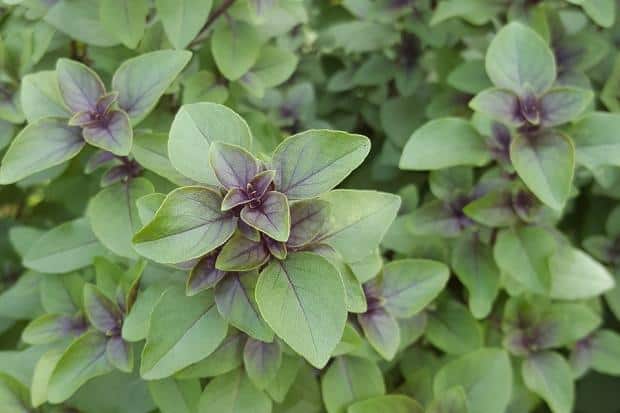
4. Tulsi or Holy Basil
This herb has been used in Indian natural remedies for centuries and has truly earned its “Queen of Herbs” nickname. Holy Basil is not the same herb as the basil commonly found in the spice section on grocery store shelves.
Tulsi boasts high amounts of iron, calcium, chlorophyll, vitamin A, vitamin C, and zinc. It has been used in recipes to treat stomach ulcers, bronchitis, joint pain, eye diseases, diabetes, and malaria.
Growing Tulsi or Holy Basil
Although holy basil will tolerate poor soil fairly well. Your plant will also tolerate some shade, so full sun is not necessary. Keep it watered but not soggy and harvest leaves as needed, just as you would with an ordinary sweet basil plant.
When
Plant in spring when all danger of frost is past for most areas of the US. In warmer regions – Zones 10 to 12 tulsi can be grown as a perennial, and if placed in the right environment can be grown as an indoor plant.
Where
The plant will grow in light shade.
How to plant
Plant seed ¼ inch deep in well-drained soil, enriched with organic matter. The plant is not too fussy and will put up with a poorer soil.
Watering
Keep it moist but not soggy.
Harvesting
As soon as the plant has sufficient leaves, you can begin harvesting a few as you need them.
5. Yarrow
This herb packs a powerful anti-bacterial, anti-inflammatory, and anti-viral punch. In addition to being a common ingredient in a plethora of salves, syrups, and tinctures. Yarrow can also be rubbed directly onto the kin to help heal cuts and minor to moderate wounds.
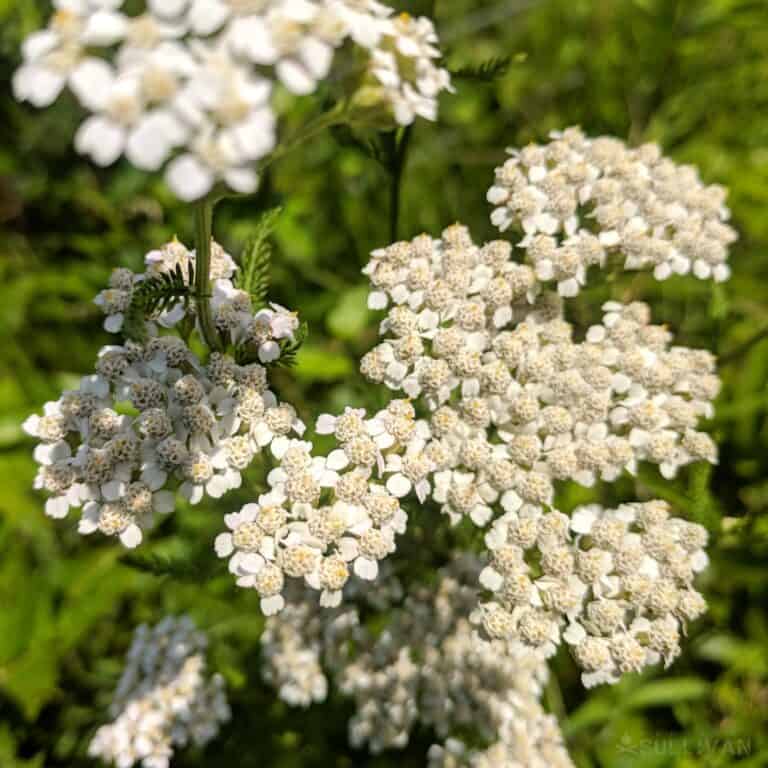
To make yarrow poultice, tear apart and steep the leaves of the plant (preferably the young leaves) with about 1 cup of hot water for approximately 20 minutes.
Dip a clean cloth into the mixture to coat it thoroughly, wring it out only slightly and then place it on the wound.
If you don’t have access to water and a heat source, crush up the leaves in a mortar and pestle, and then place them onto the wound and press them into place as firmly as possible.
You can also put yarrow leaf bits into a Mason jar filled with vodka or rubbing alcohol and let the mixture infuse thoroughly for six weeks to make a topical liniment to have on hand for wound care purposes.
Growing Yarrow
Sow the seeds placing 2 to 3 seeds in a depression and covering with soil. Sow between 12 inches to 24 inches apart. It is more likely however that yarrow will be planted by dividing a rooted piece form the parent plant.
When
Plant in spring.
Where
Plant in full sun for full compact growth – if you put it in the shade the plant gets leggy and untidy. It likes hot, dry conditions. Yarrow is best suited to USDA zones 3 to 9.
Planting
Use well drained soil – the plant does not enjoy soggy conditions
Watering
For mature plants only water them when the leaves wilt, or if the soil looks dry. Over-watering can cause the stems to rot, but young yarrow plants do need to be kept moist in the early stages of development.
Harvesting
Pick the leaves and flowers as you need them.
Pests and diseases
Yarrow is pretty hardy given the right growing conditions, but can be susceptible to botrytis blight, a fungal infection that occurs in damp conditions. Leaf spot can also be caused by similar conditions, so keep yarrow on the dry side.
Aphids, spittle bugs and mealy bugs can have a go at your yarrow plants but you can soon sort them out with an organic homemade spray. You can also physically blast them off the leaves with the spray nozzle of the garden hose, making sure to get the undersides of the leaves where the nasties like to hide.
NOTE: Yarrow is poisonous to dogs, so make sure the plants are out of the way of puppies who may like to dig up plants and chew on them.
6. Turmeric
This dandy orange spice seems like it can do just about everything! Its anti-inflammatory properties help heal sprains and strains.
Make a muscle or joint turmeric poultice by mixing two parts of the herb to one-part salt, and only enough water to make a paste.
Spread the paste onto the inflamed or inured area and allow it to harden against it, while the body absorbs the compounds for about 20 to 45 minutes daily until the injury has healed.
Add some turmeric to your homemade natural toothpaste mixture to help heal the gums and keep them healthy while whitening your teeth – it seems teeth are about the only thing turmeric will not temporarily stain orange!
Turmeric can also be added to soaps and lotions to help infuse moisture into the skin and combat damage caused by free radicals.
This spice is also used in natural medicines designed to treat stomach aches, cirrhosis, Alzheimer’s Disease, arthritis, and when brewed into a tea with some honey and ginger, might even help increase your longevity.
Growing Turmeric
In USDA zones 8 to 10, the rhizomes can be harvested in autumn and replanted immediately in warm areas. For colder zones this tropical South Asian spice, can be grown indoors in indirect light in pots that are 12 inches in diameter as the roots multiply and spread.
Where
This is an understorey plant so does well in dappled shade and requires a well-drained soil. The leaves are an attractive green – no-one will know you have food/medicine growing underground.
How to plant
Grow from the root by separating and planting 5 cm deep. The roots take a long time to sprout- around 6 to 10 months, so don’t forget where you planted them…
Watering
This understory plant in the tropical rainforests will grow in well drained moist but not soggy soil, so water frequently but avoid over watering.
Harvesting
hen the leaves die off then the roots are ready to harvest for use. Always keep some rhizomes back and plant in pots or place directly in the ground for the next year’s crop.
Pests and diseases
The main thing to worry about is rhizome rot. Learn how to deal with the very few common diseases that affect turmeric.
7. Echinacea
Dried leaves from this herb are often mixed with vodka to make a common cold symptom reducer. Echinacea naturally helps to boost the immune system and fights infections.
Teas and tinctures comprised of echinacea can help fight respiratory infections and urinary tract infections.
Growing Echinacea
The perennial echinacea will reappear annually, after a period of dormancy in winter. Butterflies seem to prefer the older varieties which may be richer in the good nutrients rather than the new cultivars. The plants will be best in their second season.
Seed
Sew from seed obtained from a reputable dealer.
When
Sow seeds in spring after the danger of frost is past. If you like you can start seedlings indoors and plant outside when the weather is warmer.
Where
They grow naturally at the edges of woodlands – so they will receive either morning or afternoon shade – as long as they get a minimum of four hours of sunshine per day. You can plant against a wall or at the edge of a food forest, or interspersed with other plants in a mixed bed.
How to plant
Plant 11 to 13 inches apart in rows 15 inches apart. The soil doesn’t need to be super rich – echinacea will tolerate a poor soil, but make sure it is well drained as soggy soil is not their thing. Once the plants enter their dormancy period cover with rich compost and be rewarded in the spring when they start to send out shoots.
Watering
Keep moist but not wet.
Harvesting
When fall sets in dig out the roots to use in your medicinal remedies.
Pests and diseases
Given the right growing conditions these tough plants are pretty much disease free. Aids, slugs and snails can easily be dealt with using natural remedies.
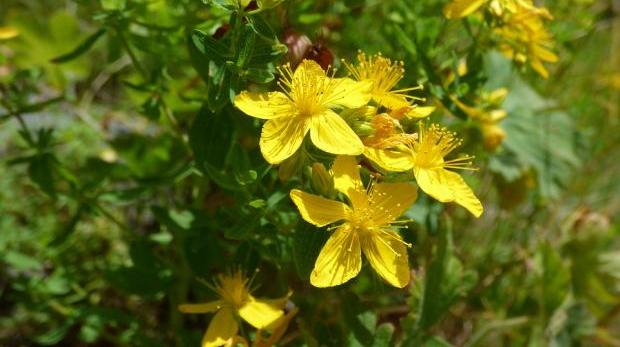
8. St. John’s Wort
This herb is known to help reduce or eliminate inflammation of the muscles and the soreness that accompanies such conditions. St. John’s Wort also often helps calm nerves and reduce stress.
Wort also often helps calm nerves and reduce stress and treat depression.
Be careful of using St John’s wort in conjunction with other medical prescriptions, as it may have a serious interaction.
Because the herb also boost circulation and enhances blood flow, the leaves are often rubbed gently onto bruises to facilitate healing.
Growing St John’s Wort
This super tough little plant will put up with a lot. It is quite an invasive plant, spreading rapidly so you may want to keep it in a container.
When
Sow seed after the last winter frost, or start seedlings indoors around 6 weeks before the expected last frost, so when it starts to warm the plants can be moved outdoors.
Where
Use as a ground cover that will help stabilize the soil. Aim for an area that does not get scorching heat otherwise the plant will wilt, but it mustn’t be in the deep shade either otherwise it won’t flower sufficiently. A dappled light is best for this plant.
How to plant
Dig some compost into the soil to a depth of around 8 inches before planting the young plants, making sure they are set to the same level as they were in the containers in which the seedlings were planted.
Watering
It will tolerate wet or dry ground and even put up with the occasional flood, however during the early stages you need to keep the young plants moist until well -established.
Harvesting
Use the plant when it is in full bloom. To test the hypericin level of the plant crush some flower buds between your finger and thumb – if a red substance is exuded then the hypericin levels are high and it is ready to harvest.
Pests and diseases
The plant can be infected by rust which causes spotting on the leaf surfaces.
Beetles were introduced to feed only on St John’s Wort in a bid to control this invasive plant in Canada are:
- Chrysolina hyperici originating from Europe
- C. quadrigemina from the Mediterranean region
- Anaitis plagiata from northern Europe
For a home gardener they are unlikely to be of concern.

9. White Willow Bark
This bark is often referred to as nature’s aspirin. White willow bark is comprised of salicin compounds that are converted to salicylic acid once they reach the stomach.
Way back when, Hippocrates instructed his patients to chew on the bark from the white willow tree when they suffered from various types of pain, inflammation, and fever.
Growing White Willow
Only plant this tree if you have plenty of room as they can grow to between 80 and 100 feet in height, and will grow 2 feet per year.
Where
Plant near water where they can get enough moisture.
How to plant
Cut a small terminal branch from a tree, about 24 inches long, trim excess leaves, and place in a well-drained loose soil and keep moist until it has rooted. When transplanting out into the garden protect the tree with a collar of fine meshed wire to stop rabbits, raccoons and deer having a go at the tender young trunk.
Watering
Plenty of water – plant near a water source, and make sure that if there is a drought period that they get sufficient water.
Harvesting
Cut the bark from small branches in early Spring, just after the sap has begun to rise and the branches have new spring color.
Pests and diseases
Because they are fast growing the willows don’t seem to have much natural defense against various diseases. PennState extension has put out a handy table on the diseases that affect white willows, identification and management.
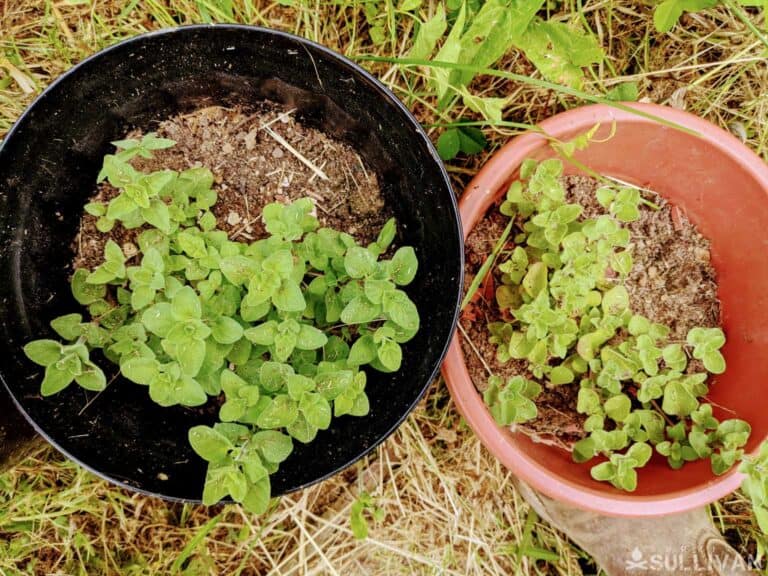
10. Oregano
Both the dried and fresh oregano have anti-bacterial, expectorant, antioxidant, diuretic, and antimicrobial properties. The herb boasts a high content of vitamin C, vitamin A, potassium, iron, manganese, vitamin E, copper, niacin, and zinc.
If you feel a cold coming on or are struggling with a sinus infection, mix together one teaspoon of a carrier oil (coconut oil or olive oil are recommended) with about 2 drop of oregano oil into a pan of water and soak your feet in them to help alleviate the symptoms.
You can also mildly heat and inhale the mixture or rub it onto your hands and feet to draw out the infection.
To stave off the flu, or to get rid of it more quickly, use the anti-viral component in oregano to rid the body of the sore throat, general stiffness, headache, and vomiting that usually accompanies the sickness.
Mix several drops of oregano oil in a glass or water and drink it once each day for up to five days.
Growing Oregano
Propagation
Best propagated from root cuttings, it will soon spread. There are two different types of oregano – one with a smooth leaf and one with a hairier leaf
When
Plant indoors at any time of the year. Outdoors in zones 3 to 8 after danger of frost is past, and keep some alive indoors in pots during the winter so you have leaves right through the year. The ones outside in areas of frost will go dormant in the winter and pp up again in the spring.
Where
Plant in full sun or semi shade.
How to plant
Plant in a container in well drained soil with has had organic matter added, or in well drained garden soil that has plenty of organic matter added.
Watering
Oregano is a Mediterranean herb and can put up with fairly dry conditions – water deeply once a week to keep in optimum health.
Harvesting
Whenever you need some eave for medicine or culinary use just cut them from your oregano plant – it will respond by quickly producing more leaves.
11. Ginger
The leukotrienes and prostaglandins compounds in ginger enable it to act much like ibuprofen. It helps to reduce inflammation and in pain reduction. Ginger has also been known to help eliminate acid and fluid around the joint of people who suffer from arthritis.
The root of ginger can help reduce morning sickness, treat various stomach problems, curtail nausea, prevent motion sickness, and reduce pain.
Ginger can be used as an ingredient in natural remedies as soon as it is harvested, or when dried into a spice or turned into either juice or oil.
To make a ginger flu treatment tea, steep about ½ of a teaspoon of dried vinegar in 1 cup of hot water for approximately 10 minutes. Strain the mixture, add honey to sweeten if desired, and drink up to two cups per day.
Some folks have found that ginger can cause heartburn or an upset stomach if taken too frequently or in high amounts. Pregnant and nursing women should not consume in excess or 1,000 milligrams of dried ginger a day.
Growing Ginger
A tropical to sub-tropical plant ginger is an understorey plant growing at the edges of forests where it gets dappled shade.
When
Plants roots after harvest in autumn.
Where
In cold areas plant in pots – pots should be at least 12 inches across as the ginger roots multiply during the year and can distort soft plastic pots if given insufficient room. In warmer areas – USDA zones 9 to 11 plant outdoors where they plant will get dappled shade, similar to conditions in tropical and sub-tropical rainforests.
How to plant
Select the knobs of ginger that are rounded and shiny and plant 5 cm deep with the knob pointing upwards.
Watering
Keep moist but not waterlogged. The ginger will take a few months before shoots appear so mark the spot in the garden or the pot it was planted in so you don’t forget.
Harvesting
Harvest when the leaves have died off. The rhizomes can be dug up and used, and some planted for the next year. Ginger can be harvested throughout the year whenever you need some – just cut off some of the root and the shoot attached.
Pests and diseases
Although fairly sturdy, ginger can get root rot caused by nematodes. Learn how to deal with these diseases often caused by too much water or soil that is too sandy allowing infected root pieces to spread the disease.
Again, these diseases are unlikely to affect the home grower with only a couple of ginger plants – just make sure you obtain the rhizomes form a reputable nurseryman as often the infection is not visible in pieces of the rhizome which are provided for planting.
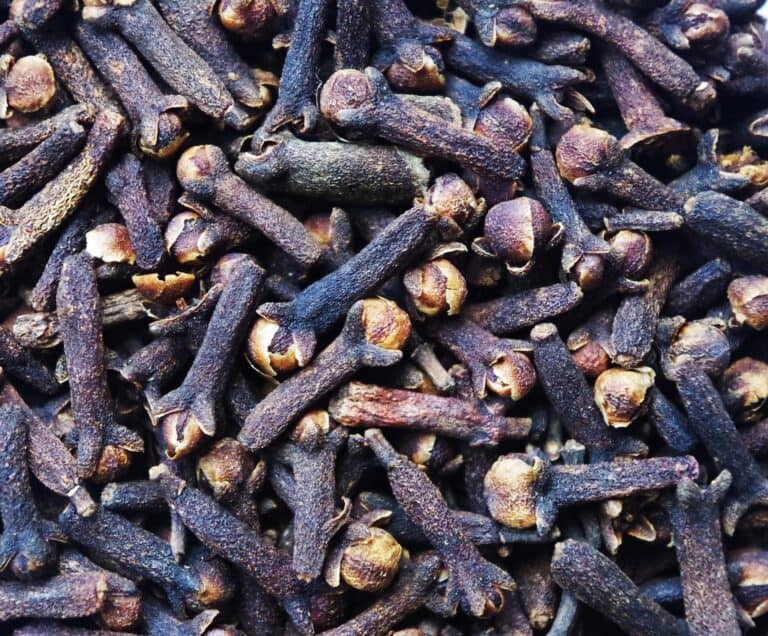
12. Cloves
The 36 different compounds in clove help make it a potent antiseptic, anti-bacterial, anti-inflammatory, and antioxidant natural remedy ingredient.
Cloves are rich in vitamin C, vitamin K, fiber, magnesium, omega 3 fatty acid, iodine, calcium, and phosphorus.
Rubbing just a small amount of clove essential oil (or chewing on a clove) will reduce or eliminate tooth ache pain and gum pain. Pregnant women have long used cloves as a natural means of combating morning sickness.
You can either inhale the smell of clove oil that has been poured upon a rag for a few moments, or chew on several cloves for a minute or two before spitting them out, to help get rid of morning sickness.
To reduce or stop vomiting, mix equal part of cloves and honey in a glass of lukewarm water and sip on it slowly until the nausea passes.
Growing Cloves
The clove tree grows in tropical areas and takes a long time to mature. Probably not the best idea to try growing your own as the conditions are quite specific. They grow naturally in Indonesia where it is hot and wet.
The trees need 50 to 70 inches of rain per year. The trees grow to around 40 feet and until they are well established they need to be near another plant to provide protection from the sun and wind.
Another thing is you will probably need to wait 20 years or more for a crop. So, it is probably best to leave the clove production to the commercial growers whose plantations are generally no more than 10 degrees from north or south of the Equator… and they need to be near the ocean too – something to do with the sea breezes.
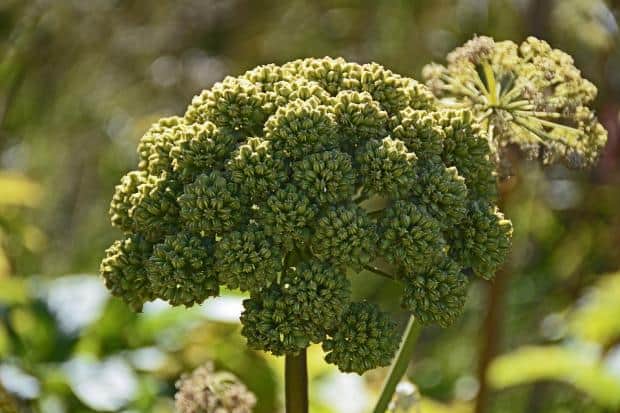
13. Angelica Root
The root helps to reduce or eliminate pain from menstrual cramps naturally and may also help a woman struggling to deliver the placenta after giving birth.
Angelica root can also work as a pain channel blocker and a stimulate for the lungs when the body is battling chest congestion.

14. Birch
Bark from the birch tree can be brewed into a tea or made into a tincture and used to treat psoriasis, kidney stones, bladder infections and problems, and gout.
Birch bark, due to its botulinic acid composition, is used by some cancer patients in alternative natural treatments.
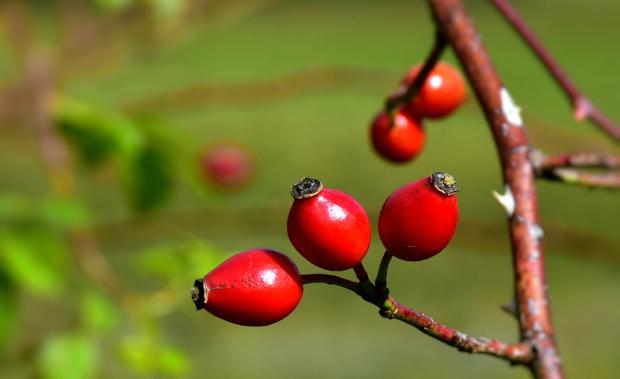
15. Rose Hips
This beautiful bush contains more vitamin C than oranges and is a great natural immune system booster.
Rose hips are also often used alone or as ingredients in natural remedies created to treat urinary tract infections, high cholesterol, stomach ailments such as diarrhea, gall bladder problems, constipation, gout, kidney infections and problems, as well as leg and back pain.
You can eat the rose hip fruit raw, but not until they have been washed and crushed in a food processor or blender.
Typically, rose hips are soaked in a pot of water overnight and then cooked over medium heat for approximately 30 minutes before being used in a home remedy, brewed into a tea or turned into wine.
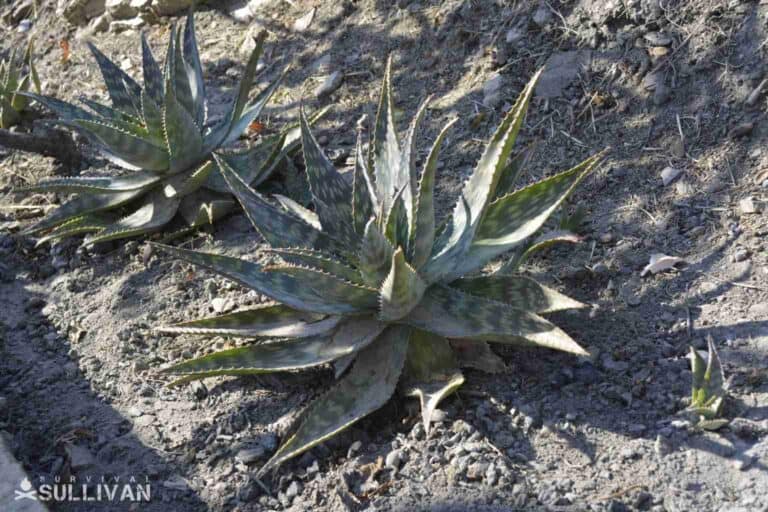
16. Aloe Vera
Not only does aloe vera juice from inside the leaves help ease the pain of burns and heal wounds, the plant can also be used as an ingredient in natural remedies to treat viral, fungal, and bacterial issues.
Just a drop of aloe vera juice in chicken’s drinking water will help keep them free of various water-borne diseases.
Growing Aloe Vera
Growing this plant is so easy – the only thing to remember is that is it not frost tolerant.
When
Plant at any time of the year, when the main plant produces small offshoots with roots. They are likely to do better in spring when the days are lengthening, but aloe vera can be started indoors at any time as long as it gets enough light.
If you are growing from seed then choose springtime to plant in pots in a 50/50 mixture of peat moss and coarse sand in a greenhouse. Keep the seeds damp but not water logged. After between 2 and 4 weeks you should see the tiny aloe vera sprouts appearing.
Where
Aloe vera will grow outdoors in USDA zones 8 to 13. They cannot tolerate frost, so if you are in a cold one then plant in a container and bring inside in the fall. A bright kitchen windowsill is perfect for smaller ones – as you’ll have the leaves right at hand should you need them to soothe a burn or a minor cut.
How to plant
When the main plant produces pups – small plants alongside the main stem make sure they have a root system before gently prising them away from the main stem and planting out. I tend to give mine shade until well established.
Watering
Water sparingly – the plant stores water in its leaves – along with that amazing aloe vera gel. Water when the top of the ground dries out and water fairly deeply but make sure if it is in a pot that it is well-drained otherwise the roots will rot. In the ground, plant in well-drained soil and do not over water.
Harvesting
Cut off healthy green leaves as you need them. The plant will continue producing leaves and smaller ‘pups’ will grow around the main stem.
Pests and diseases
The plants can suffer from root rot, leaf rot and aloe rust. These are mostly caused by overwatering. In the case of aloe rust the area on the leaf will go black and dry out – it won’t spread but looks unsightly.
The aloe vera aphid can cause problems – often seen at the base of levees and at the ends. Avoid over-watering and ensure enough air circulation around the plant.
The aphids can be controlled with a homemade insecticidal spray made from a tablespoon of grated natural soap mixed with two pints of water.
If you have white flies spray the off using a strong spray form the hose. The alternative is to encourage beneficial insects like ladybugs – just one ladybug larva can eat around 5000 aphids in its lifetime.
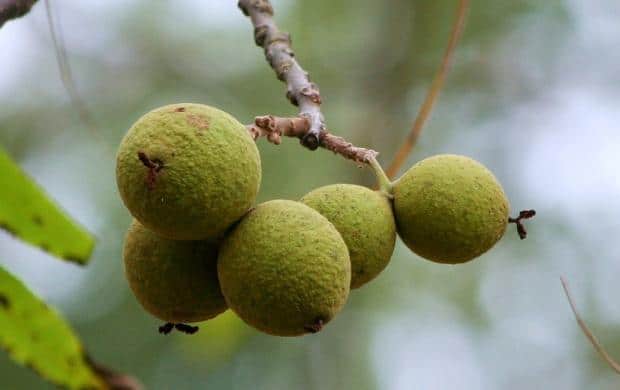
17. Black Walnut
While you do not want a black walnut tree growing anywhere near your garden (it will kill or harm a host of crops, including tomatoes and peppers) you should cultivate the trees somewhere on your survival retreat or bug in location.
The bark and leaves from the black walnut tree can be used in natural poultices and salves designed to treat poison ivy, poison sumac, warts, and a variety of fungal infections.
Growing Black Walnut
The trees will produce nuts in zones 4 and up to 9. In zone 3 it may be too cold for them to produce nuts. They grow up to 100 feet so be careful where you plant them!
To start black walnuts from seed, the exterior husk needs to be removed, before proceeding with planting.
Where
Plant well away from other crops as the roots have a toxin (juglone) in them that will spread into the soil resulting in other crops wilting and eventually dying. The seeds, buds and leaves also contain levels of the toxin so you want to keep this all away from other plants.
The only vegetables, according to Purdue University, that will tolerate the juglone from black walnuts, are snap and lima beans, corn, carrots, onions, parsnips, melons and squash, but do not plant these under the black walnut canopy where the jugone is most concentrated.
How to plant
Plant in well-drained, deep soil enriched with organic matter, in full sun. The roots go down about five feet so make sure the soil will allow this, otherwise the tree won’t grow well.
Watering
Give a deep watering once a week in spring and summer, then hold on the watering during the dormant period in fall and winter.
Harvesting
Harvest the nuts in fall. The outer green husk which would normally be discarded, is what the tinctures are made from.
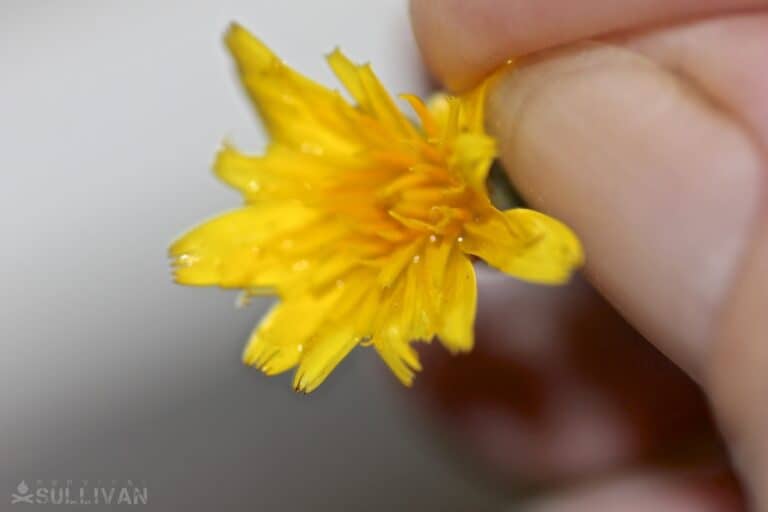
18. Dandelions
Common to popular opinion, dandelions are definitely not useless weeds. They can be used in natural remedies designed to treat the symptoms of menopause, menstrual cramps, and various ovarian problems. Dandelions also taste great when turned into either a hot or cold tea and wine.
Growing Dandelions
Dandelions can be found growing in pastures but if you want some conveniently located in your garden collect some seed, press it lightly onto the surface of the soil where you want them to grow and water lightly. Do not cover with soil.
When
Sow between March to September in the northern hemisphere. The seeds should germinate within 2 to 3 weeks.
Where
Plant in rich well drained soil for the best tasting leaves – although dandelions will grow in just about any type of soil. Do not let them seed otherwise you will be forever removing weeds from the garden.
How to plant
Plant in situ – once the seeds have sprouted you may need to thin out the plants so they are between 2 to 6 inches apart – depending on whether you want the young leaves as micro-greens or want to grow larger plants.
Watering
Water enough so the soil is most but don’t over water. Every 2 to 3 days should give you healthy plants.
Harvesting
This will depend on what part of the plant you are using – leaves as soon as they are big enough to pick, flowers within around 60 days of planting onwards., and the roots when they are mature – around 2 to 3 months.
Pests and diseases
Generally, dandelions are a weed and therefore pretty tough. However, in commercially grown Italian dandelion there has been a report of bacterial leaf spot for the first time in California. Homegrown dandelion shouldn’t have any pests and diseases.
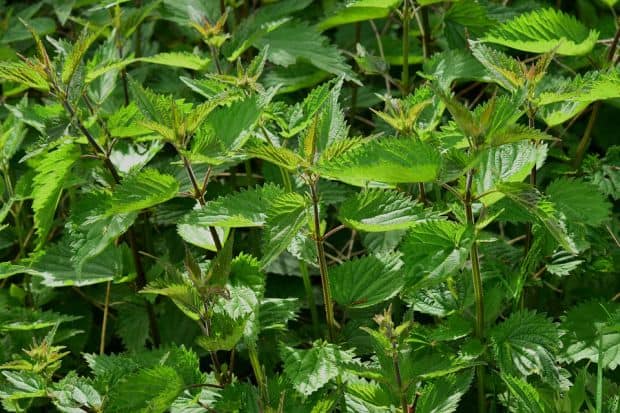
19. Stinging Nettles
This weed grows almost everywhere in the United States. Even though you have to wear gloves to pick it and clean it, the benefits far outweigh the time it takes for the added precautions.
Stinging nettles have a high fiber and calcium content that helps to promote strong bone health. It is often used in natural remedies, or eaten alone, to treat common season allergy symptoms, skin rashes, kidney infections, and urinary tract infections.
This weed seems to be everywhere, and you should be able to forage some nearby. The chances are you won’t even have to plant it on your property – it will be there.
If you don’t happen to have one, simply dig one up – most people are only too happy for you to take one from their garden – choose a young plant, cut the leaves back and dig up without disturbing the roots, then transport the soil and root ball home and plant in well drained rich soil.
Water regularly but don’t overwater and harvest the nettles when you need them, using gloves.
20. Lavender
This colorful herb is known to possess anti-inflammatory and anti-septic properties. Lavender is often used in natural remedies to treat anxiety, insomnia, depression, and to help heal both bug bites and minor wounds.
Growing Lavender
There are a large number of different types of lavender – French, English, Dutch, Spanish …
Plant in a well-drained fertile soil for best results and water then the top layer of the soil gets dry.
Lavender needs full sun for a compact bushy growth – if it is in the shade it gets leggy and untidy.
Lavender can be grown from slips about 4 to 6 inches long, taken from new growth.
Leave only the top few leaves and plant in a mix of compost and coarse sand. Ensure the cuttings are kept moist until they establish themselves.
If the cuttings dry out they will simply wilt and die during the early stages. To ensure success I plant the cutting quite deeply in the propagating mix and ensure that it is firmly in place – two to three inches below the top of the soil, and water immediately once it is planted to ensure it is not loose in the soil.
Harvesting
Harvest leaves as soon as the plant is well established – with 2 to 3 months.
21. Honey
Raising your own bees has many benefits, the copious amount of medicinal uses of honey being chief among them. Honey is one of the best wound healers nature has to offer.
Honey has been known to help speed up the healing process of both burn and wounds due to its hydrogen peroxide and glucose properties.
The two compounds are released from the honey after it is diluted in bodily fluids or water.
By applying the honey to the wound, there may be less chance of scarring, and the dressing will be able to be removed with a smaller chance of sticking and pulling away scabs or healing skin.
Take 1 teaspoon of honey each day to bolster your immune system and help reduce fatigue. Honey may help increase blood flow and improve blood fortification and harden capillaries as it distributes glucose throughout the body.
Honey consumption may also help heal a damaged colon and strengthen the body against colon disease.
Mix together three tablespoons of honey with a ½ of apple cider vinegar and drink it to help expel parasite from the body. Make honey “bombs” or natural cough syrups to alleviate sore throat pain.
The antioxidant compounds in honey may help prevent heart disease and cancer. Put a dab or two of honey on a bug bite or lip sore to foster healing and prevent infection.
Keeping your own bees is both financially and emotionally rewarding but does take quite a bit of research in order to make sure your bees are well looked after and disease free.
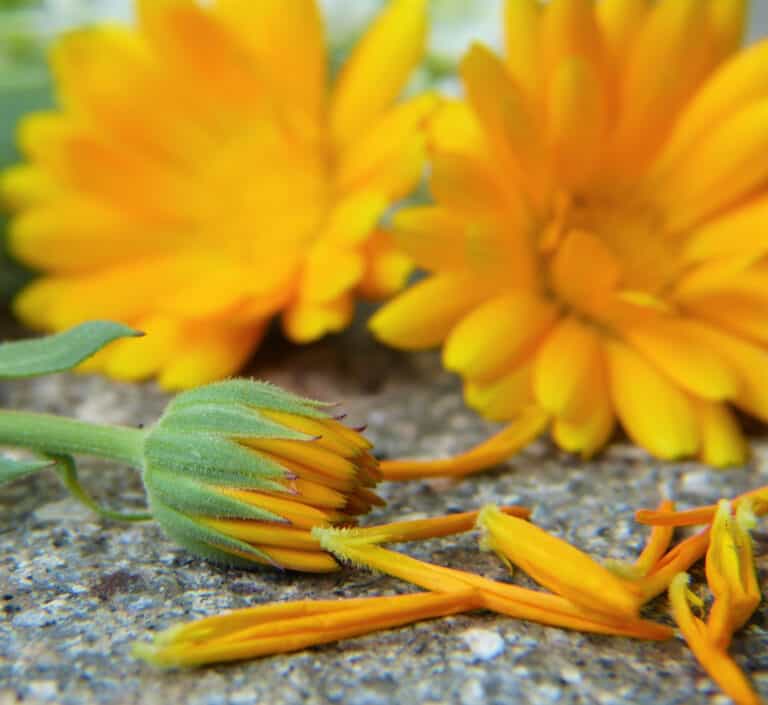
22. Calendula
The petals from this hardy flower can be used in natural remedies to treat conjunctivitis, minor wounds and skin rashes, to bring down fever, and to treat amenorrhea.
Calendula flowers boast strong immuno-stimulant and anti-bacterial properties and may help folks with weak immune systems from become sick or when battling an illness.
The medicinal plant also helps decrease scarring thanks to its ability to stimulate collagen production.
Gargle some calendula petals mixed with water to help reduce sore throat pain. Use calendula petals in lotion and salves made to treat diaper rash, bedsores, varicose veins, and eczema.
Due to possible miscarriage issues, pregnant women should not consume calendula natural remedies.
Growing Calendula
How to plant
Plant from seed by placing a quality potting mix into a pot that is 10 inches across and preferably 10 inches deep, and scattering the seeds on the surface – press lightly into the soil but do not bury the seed.
Water with a fine mist spray and keep the soil moist until germination takes place. After plants are established they will not need much watering – just when the top of the soil seems to have dried out.
Plant outdoors using the same method as for pots, and thin out the plants when they are around 2 inches high, transplanting those too close to each other to within 12 inches of each other choosing a cloudy day to transplant, or towards evening, and making sure they get a good amount of water to take them through the transition.
Where
Plant where the calendulas receive morning sun or in lightly dappled shade.
When
Plant in spring after the last frost. The plant will reward you with flowers throughout the year right into fall and winter in warm areas, if deadheads are removed to encourage blooming.
The plants prefer cooler zones so if you are in Zone 10 or 11 they may take a siesta during the heat of summer and perk up again in the fall and winter. The plant reseeds easily, so keep some seed for the next season.
Pests and diseases
Calendulas may be attacked by aphids and whitefly – but tablespoon of grated pure soap mixed into two pints of water and shaken to mix then sprayed on the plants should sort them out.
Whitefly gather under the leaves so a good spray with the hose should dislodge them. Alternatively, encouraging ladybugs, lacewings and hoverflies should help.
Powdery mildew can be a problem in wet weather – try to water plants from the base rather than on the leaves, remove affected leaves and also thin out the stems so there is good air circulation around the plant.
Generally encouraging insect eating birds to your garden like bluebirds, cardinals, robins and swallows will help keep the insect population in control.
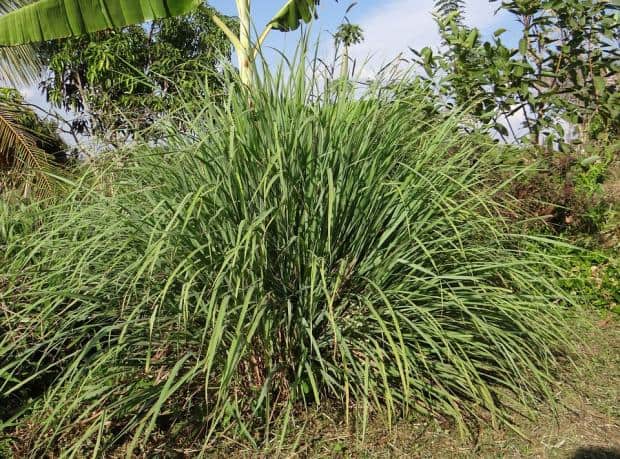
23. Lemongrass
Both fresh pickings and the essential oil made from the plant are used in home remedies to treat painful joints, high blood pressure, symptoms of the common cold, vomiting, fever, exhaustion, and convulsions.
Lemongrass is also a great mild astringent for use in skin care and as a natural cleaning agent.
Growing Lemongrass
Plant from seed or for a quicker result from pieces taken from a clump of lemongrass that have roots.
Where
Sun or part shade all suit lemongrass
How to plant
Plant in well-drained soil and keep moist until established, then water when the top of the soil is dry. Lemongrass will form clumps and these need to be split and replanted to keep it healthy.
If you are growing your lemongrass in pots you will need to feed regularly by applying a light layer of compost on top of the soil or feeding with worm castings to make sure it continues growing healthily
Harvesting
Either snip the stems at soil level or pull the stem you need to use out gently from the edge of the plant.
Diseases
Lemongrass acts as an insect repellent so is no subject to insect attack but a rust disease has been the object of study in Hawaii where it attacks lemongrass – the disease seems to occur in warm, high rainfall climates, and has occurred in many other places around the world, causing an abnormal number of dead and dying leaves.

24. Ginseng
It helps to reduce or prevent fatigue: both physical and mental. Ginseng may also help correct erectile dysfunction and reduce both the severity and frequency of cols.
Make a ginseng medicinal tea by simmer 1 teaspoon of dried sliced ginseng root in 1 cup of water for approximately 10 minutes. Drink up to two cups per day as necessary.
Growing Ginseng
Ginseng is very expensive, so if you are patient enough to grow your own it will be well worth it. There is a huge demand for ginseng as the forests where it naturally grows in Asia have been depleted of ginseng.
Asia now imports from America where it is grown under shade cloth as it is an understory plant, requiring shade. It does take between 5 and 10 years for the plant to reach a harvestable size- although for your own home use you could harvest from about three years.
Growing ginseng takes patience, but once the plants are established, given certain conditions they pretty much look after themselves.
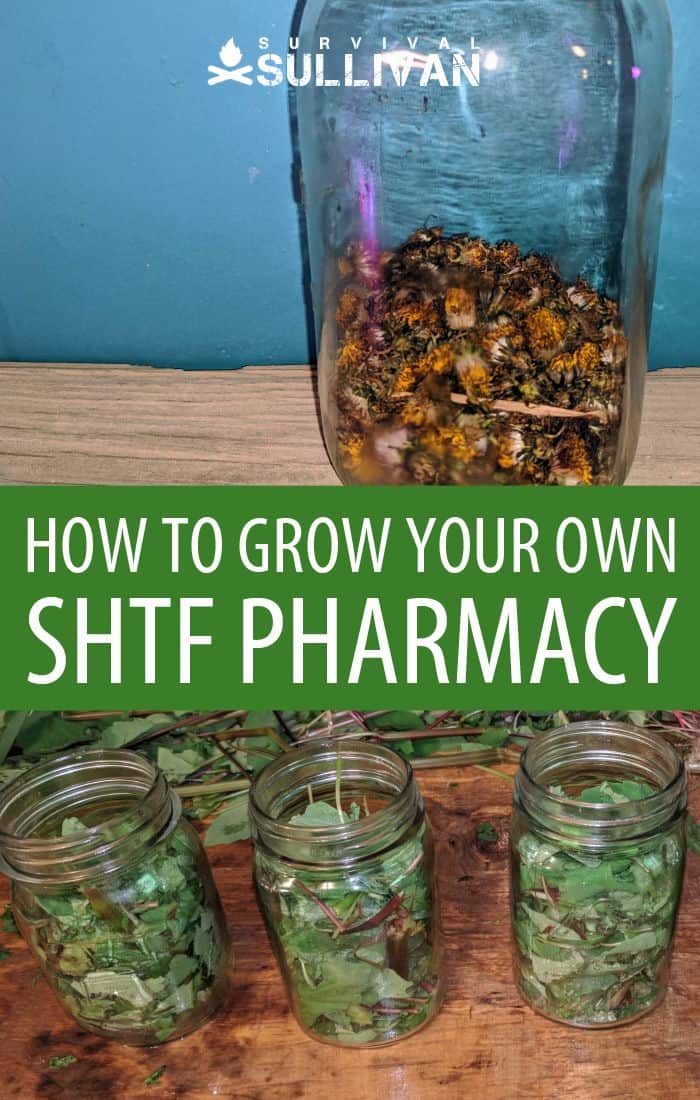

Tara Dodrill is a homesteading and survival journalist and author. She lives on a small ranch with her family in Appalachia. She has been both a host and frequent guest on preparedness radio shows. In addition to the publication of her first book, ‘Power Grid Down: How to Prepare, Survive, and Thrive after the Lights go Out’, Dodrill also travels to offer prepping tips and hands-on training and survival camps and expos.


Thank you, Tara, for putting together such a great and useful guide.
David, You are very welcome! I keep researching natural medicines and trying new ways to expand what we grow in our apothecary. I am about to start growing natural chewing sticks for tooth brushing and soapberry trees to make laundry and hand soap. While those to things might not seem like typical apothecary items, keeping clean to rid yourself of germs and maintaining dental care after the SHTF will help keep us healthy.
Finally, the value of dandelion is recognized. It’s also an effective diuretic.
Patrick, it is great to virtually meet another dandelion admirer! It baffles me why folks mow over these little flowers instead of plucking them from the ground for their medicinal properties or to use them to make tea or wine. I don’t really have the patience for wine making usually, but dandelion wine is really delicious!
Good article, many of which I am growing for that very reason although there are some that just won’t grow here.
Also, that is NOT a picture of turmeric which is a member of the ginger family and looks almost the same as ginger. The picture looks like an echeveria but that is just a guess.
I have also added these to the garden since they don’t grow naturally in my area:
– wild lettuce for it’s non addictive narcotic like effect
– Californian poppies to promote sleep
– valerian ditto
– plantain for skin problems and healing
I’m hoping they will naturalise but our hot summers test even weeds.
Turmeric has a flower.
https://en.m.wikipedia.org/wiki/File:Curcuma_longa_-_K%C3%B6hler%E2%80%93s_Medizinal-Pflanzen-199.jpg
Ginny and Maria, not sure how the glitch with the pic happened, but we will get it fix. I LOVE turmeric!
Ginny,
I didn’t think to add wild lettuce because it grows all over the place here, but thank you for the comment so other readers can learn of its great healing properties too!
Wild Lettuce: As a natural substitute or opium, it can also be used as a natural treatment ingredient in remedies for urinary tract problems, whooping cough, menstrual cramps, the common cough, insomnia, restlessness, especially in children, to treat swollen male genitals – and if you really wanted to go that route, as a natural way to reduce a woman’s sex drive.
I pick plantain from around our survival homestead often, great stuff!
Regarding the onion cough syrup. Just dice the onion small, place in a jar with the honey and leave over night. The honey will draw the juice out of the honey. If you heat honey over 40 degrees C you risk distroying all the good enzymes.
Fred, Thank you for the additional information about using onions and honey to heal. Getting the heat just right to activate the medicinal properties of some natural remedies, or keeping the heat low enough not to destroy those same healing properties can be quite tricky. I have been using diced onions mixed with bread and milk as an infection drawing salve for Pearl – our goat. She was the victim of a dog attack and had multiple puncture wounds to her leg that were hot, hard, and swollen. It has been a week now of Penicillin shots and natural remedies and even though she may never have full use of that leg again, she is happy, healthy, and jumping and walking on her three good legs just fine.
Nice info. Thank you
I live in Rockhampton on the tropic of Capricorn in Queensland Australia. We cant grow any of the cold climate plants that you can. Summer is our worst time to grow veges because of the heat. Garlic will only grow in our winter if you can plant in autum (fall). The same with onions. If you plant to late it gets to hot in spring before they mature.
Fred, you live in a beautiful area of the world, wish growing was an easier task to complete for you though. Have you tried any indoor gardening or container gardening to increase your yields? Growing small amounts of medicinal herbs in windowsill containers might be an option for you. What grows well in your area, both cultivated and wild varieties? Maybe you have some great medicinal plants, herbs, or roots growing nearby that we are not familiar with in America?
Amazing article on the pharmaceutical effects of plants by survival sullivan
Would like to get this in PDF FORM. It would help me a lot. Thanks D.
D,
You can click the Print Friendly button at the bottom of the article, then save as PDF..
Thank you. But take some of this with a grain of salt. For instance “Garlic draws out and removes germs from the bloodstream and our bodies in general. ”
This statement has zero merit to it. As a medical provider I perform blood cultures all the time and no bacteria grow out. If there is bacteria, yeast, etc. in your blood stream you would be dead in hours to days. My point is if something is not referenced to a valid study it probably is folklore and antidotal at best. On a positive note, we use honey all the time for wound healing and there is studies to back up its use. Last word of advice, if a little is good, a lot is not.